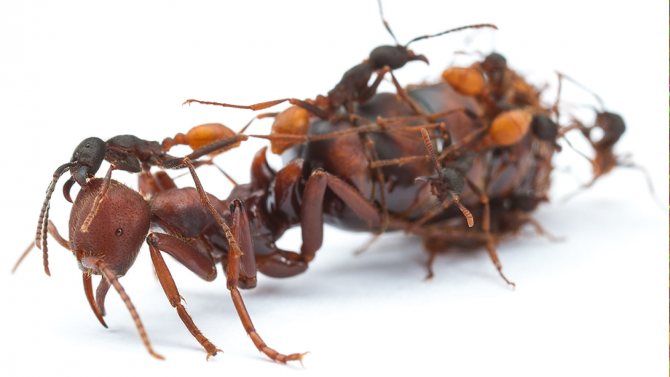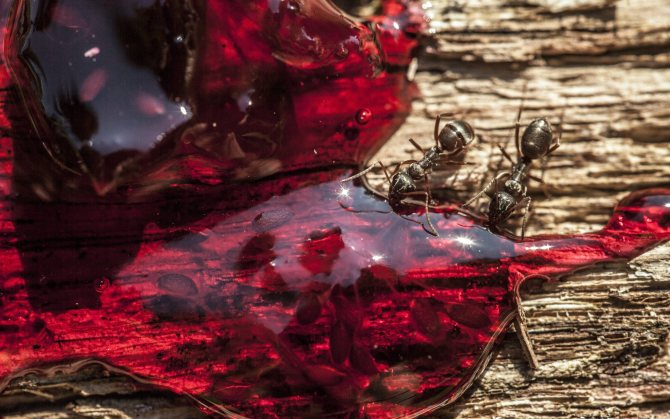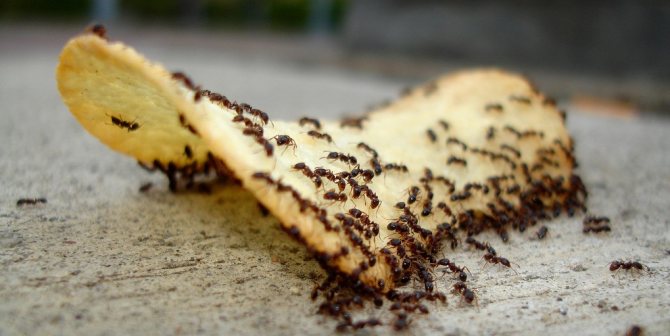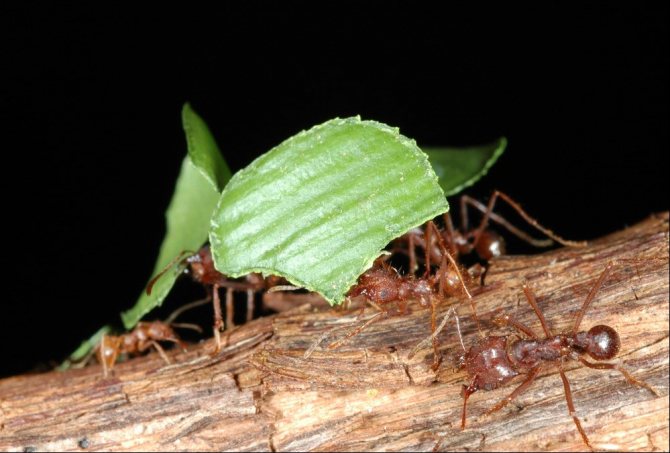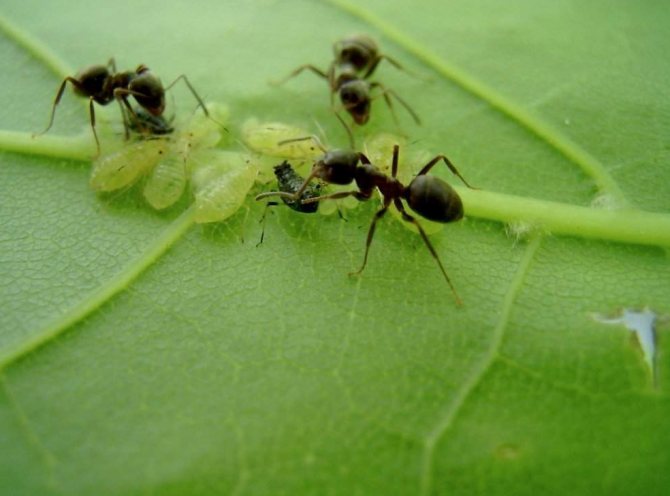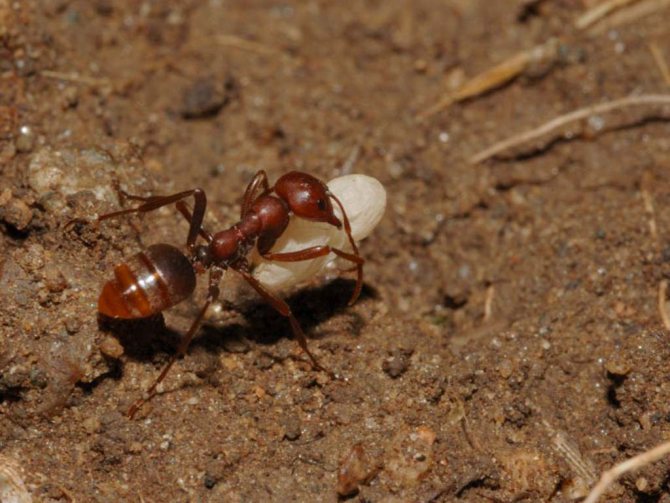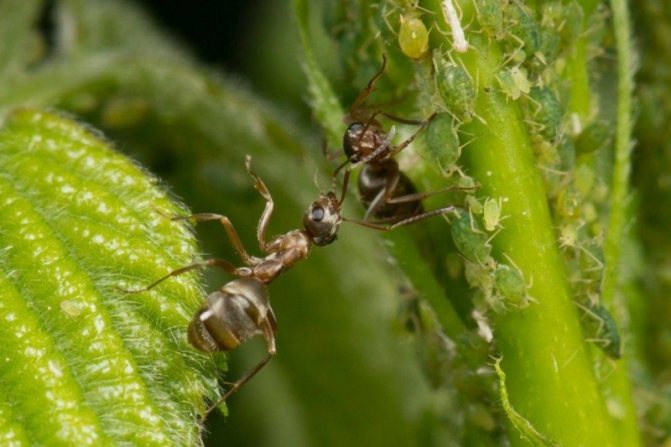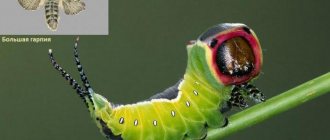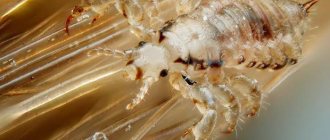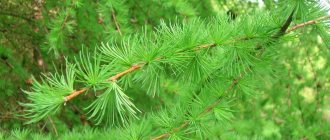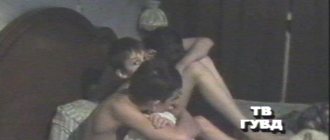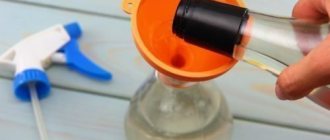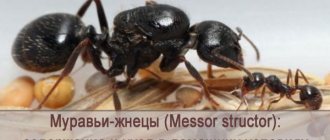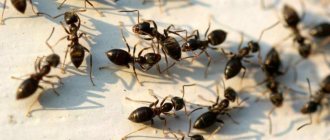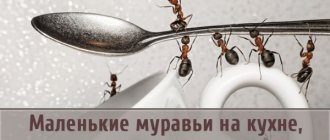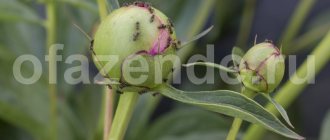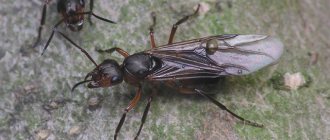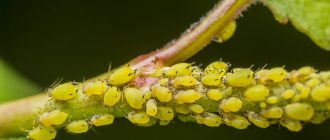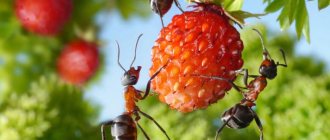Everyone knows ants from childhood. These creatures are characterized by labor-intensive abilities, thanks to which they carry objects that are many times greater than their own body weight.
Also, many people know about the omnivorousness of individuals living in natural conditions (forests, fields, vegetable gardens), as well as parasites that settle in human dwellings. Household pests are especially adapted to different types of food, which makes them difficult to remove.
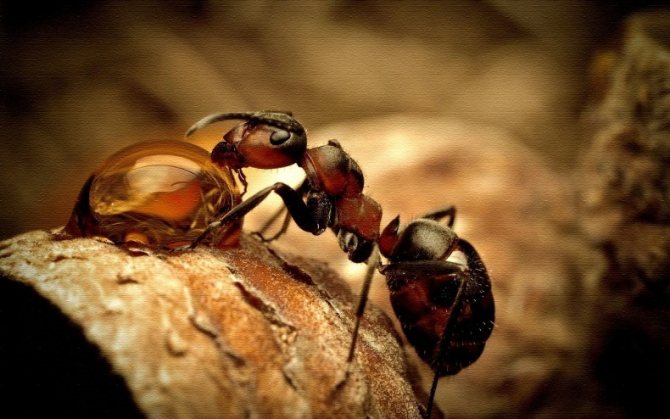
Even observing perfect cleanliness in the apartment, some housewives can find these insects in their kitchen and other rooms of the apartment. To understand the essence of behavior, the survival of ants in different environmental conditions, one should figure out what they prefer to eat in nature and at home.
Ant diet
Depending on the species, habitat and time of year, the ant menu may vary. Even strict vegetarians, like reaper ants, get into the house and change their addictions. For this reason, what ants eat in nature is very different from their gastronomic preferences in the apartment.
On a note!
Most ants have a division according to the type of food: the larvae and queens feed on protein food, the working individuals - on easily digestible carbohydrates.
Ants often drink "honeydew" - the sweet sap of a plant that is released when the air temperature drops sharply.
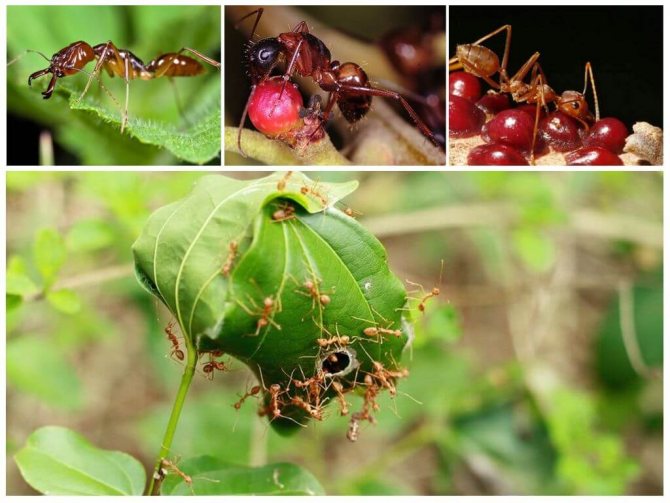

Ants feeding
Gourmets among ants
Some species of ants, with all the variety of nutritional balance, choose only 1-2 types of food. These gourmets include the following insects:
- Leaf cutter ants. They are making hay.
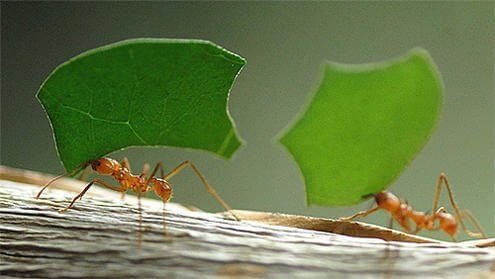

Leaf cutter ants
Foraging ants drag pieces of leaves into the nest. They themselves grind them to a sticky gruel. She is placed in special chambers in the anthill. Like greenhouses. Mushrooms sprout on leafy porridge. Ants do not feed on solid grass. - Center ants They feed only on termites;
- Pinerins. In this subfamily of insects, each of its species feeds on one type of insect.
- Ant Dracula. Interesting insects. They prefer to be saturated with the juice of their larvae without harming their health. They feed insects to the larvae.
Woodworms: what they eat
Woodworm food is the rotten heart of dead trees. Adults of woodworms can feed on such coarse food due to the presence of bacteria in their intestines that help digest cellulose. By consuming decaying trees in the forest, woodworms provide significant benefits.
On a note!
But these same insects in log houses can eat the core of the walls and arrange an anthill there. When woodworms appear in the house, it is better to take measures to exterminate them.
Predator ant food
The diet of predator ants is exclusively animal food, which they also feed their offspring.
The main food for them is:
- small insects;
- invertebrate larvae;
- small lizards;
- frogs;
- sick chicks.
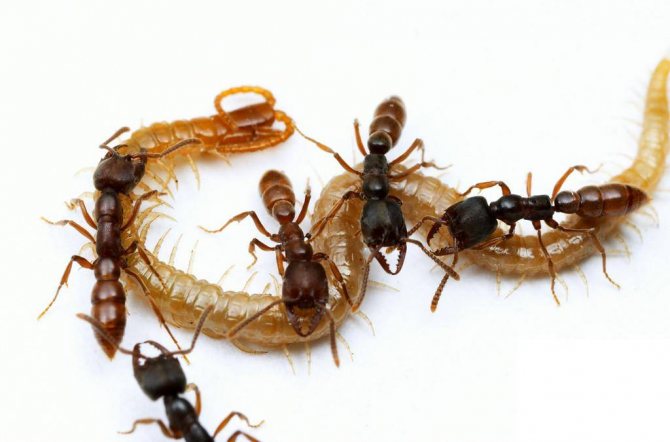

In addition, predator ants feed on the rotting corpses of animals encountered on their way, wounded immobilized animals.
Garden pests and their "cows"
One of the serious enemies of gardeners is the black garden ant. The species is omnivorous, but if there is a choice, the ants eat the sweet secretions of aphids.If there are no aphids in the garden, the "shepherds" will carefully bring them with them, because ants and aphids live in close symbiosis. The pests collect aphid honeydew and take it to an anthill, which is arranged in any place convenient for them:
- soil;
- old tree stump;
- the wall of the house;
- in the gap under the windowsill.
In the last two cases, they enter the house. In the house, garden ants eat whatever they can find, justifying their omnivorousness. Having found sweet food: sugar or honey, the garden pest will take it to the anthill. In the garden, they can also not only breed aphids, but also harm plants. According to the testimony of gardeners, representatives of the "black garden" species feed on young cabbage seedlings in the spring. Climbing into the hives for honey, these insects harm beekeepers.
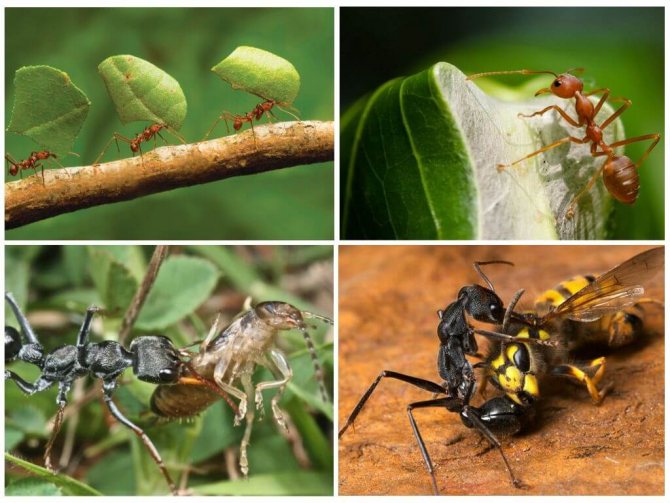

Food for ants
How to get rid of ants in an apartment forever
When small black ants get into an apartment or a private house, they bring a lot of inconvenience to a person. During the mating season, adults are very aggressive and bite people, which leads to painful sensations. Workers constantly crawl in the kitchen over all the products, and before that they could also actively crawl on the trash can. Therefore, it is better to get rid of them and as quickly as possible, preventing global reproduction.
Remedies for ants in the apartment
Black ants, like other small insects, cannot tolerate the smell of certain herbs such as wormwood, mint and elderberry. The decomposed branches of plants will help scare off pests in winter and prevent them from entering the living space. This must be done in advance, before the appearance of their invasion, since such a folk recipe will help get rid of several individuals who have accidentally run in, but not from the flock.
Insecticidal agents are considered the most effective in the fight against ants:
- aerosols and sprays, for example Raptor, Dichlorvos, Dichlox; line of Kombat tools; ant baits and traps.
Folk remedies for ants in the apartment
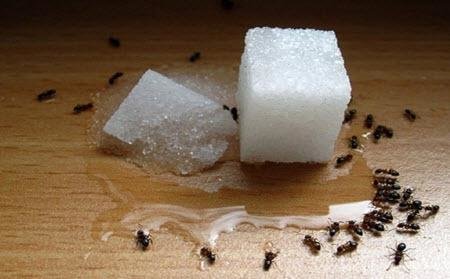

In addition to modern chemicals, there are folk methods that have been tested by more than one generation and give good indicators in the destruction of pests:
- since these insects eat everything sweet, special baits are prepared from sugar, steep yolk and boric acid, the prepared balls are laid out in the places of their accumulation and movement; coffee grounds mixed with honey or sugar syrup can destroy an entire ant family; powdered cornmeal will also help fight pests.
In nature, there are many species of small ants, some can live only in the forest, feeding on wood, others eat only animal food, and still others look for food in all sorts of places, including the apartment. It is they who get to us in the winter in our dwellings in search of food that is missing for a normal existence.
A source
Forest ants
Red forest ants are quite harmless creatures.
On a note!
This species is sometimes called forest red.
Their nest is always in the forest. They crawl into the house only in search of food, if the housing is located near the anthill. In nature, forest ants feed on:
- caterpillars;
- seeds;
- fall aphids;
- honeydew;
- fruits of plants.
How the mouth apparatus works in ants
Ants have a gnawing type of mouth apparatus, which can be conditionally divided into three parts: upper and lower lips and jaws, with which the insect chews food. The jaws can be large or small, sharp and obtuse, smooth and with teeth, overlapping or closing - depends directly on the type of Hymenoptera. On the lower lip, ants have a small tongue, which is the organ of taste.
Ants belong to the order of Hymenoptera, although only males and females have the means for flight, and simple workers move exclusively with the help of their paws.
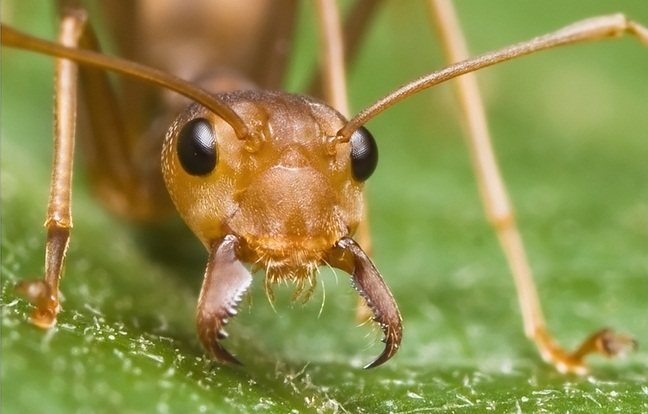

Red ants have very sharp and powerful jaws.
Who eats ants?
Many animals feed on ants. They are very fond of ruining the anthill, getting to the larvae of forest ants, bears. Anthills and wild boars are often torn apart. Frogs, toads, wasps, lizards, ant lions (insects of the order of retinoptera), moles and hedgehogs eat ants of various species, including those living in the ground and trees.
Many birds appreciate the taste and nutritional qualities of ants. Woodpeckers are especially active in destroying these insects, and during the swarming period (when the ants have wings), they are attacked by swallows, swifts and dragonflies.
In warm countries, the natural enemies of ants are anteaters, aardvarks and armadillos, as well as some tribes of people who eat insects and their larvae as a delicacy. Some species of ants are attacked by other ants, and in times of famine, ants of the same species can eat each other.
In the video: Ants are dragging a sausage.
Natural enemies of ants
Ant colonies are huge in number; a colony can contain from hundreds to thousands of insects. And yet they are very vulnerable.
In nature, insects have a lot of internal and external enemies that feed on both adults and their larvae, parasitize on them, and use their bodies for various purposes.
Some types of fungi, insects and helminths can be attributed to the internal enemies of the ant population:
- Mushrooms from the genus Cordyceps infect, kill the insect, and the fruiting bodies of mushrooms sprout from its body.
- Cypoptera are insect parasites that use ant individuals to attract mates when mating.
- Humpback flies - lay eggs in the body of a living individual. The developed larva decapitates the insect with the help of a special enzyme.
- Blueberry butterfly larvae - develop in ant nests. Caterpillars secrete the same odorous substances as ant larvae. Therefore, the ants take care of them, and the caterpillars feed on their pupae.
- Lomehuza beetle - with the help of a secreted drug, this parasite forces insects to feed and take care of him more than about his offspring and the anthill degenerates.
- The parasitic wasp afiliantops - feeds the larvae with insect wings.
Who eats ants
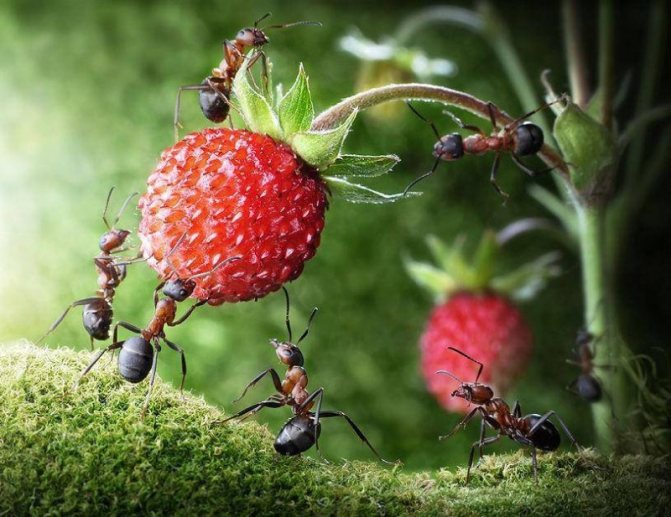

In addition to internal enemies, there is a large detachment of fauna with pleasure eating these Hymenoptera. In the tropics, armadillos and anteaters feed on ants.
Brown bears, lizards, moles, shrews, hedgehogs, toads, frogs, and some types of fish like to feast on insects and their pupae. Birds are also known to hunt representatives of the ant family, for example, the anttrap, swivel neck, woodpeckers.
There are insect-like creatures that hunt ants. The most dangerous species is the ant lion (myrmidont).
Why are ants harmful in the country
The main harm of ants on the backyard is that an integral part of their food is the "pad" of garden and garden aphids, which contains a large amount of sugars.
Located not far from their colonies, ants constantly guard, as it were, "graze" these dangerous pests from their enemies - larvae of sorfid flies, lacewings, predatory beetles, etc. There is an opinion that ants eat aphids only when they are excessively multiplied, as if regulating the "herd of aphids". They often transfer aphids to young shoots of unoccupied branches, thereby facilitating their dispersal and reproduction. Plums, apple trees, cherries, mountain ash especially suffer from aphids. ...
The appearance of ants on the site can lead to massive damage to plants by aphids.
Homemade sweet tooth will pick up everything
Domestic ants, pharaohs, prefer sweet high-calorie foods. She replaces them with a pad. First of all, insects pick up sugar, honey, jam. At the same time, they drag into the nest everything that they find in the kitchen and not only:
- bread crumbs;
- sausage;
- vegetables;
- butter;
- cereals.
They will climb into the trash can and clean the discarded eggshells from the protein on the walls.The animals will pick up crumbs in the bowl and even grab a drop of his saliva. Ants can attack a cockroach, kill it and turn it into food supplies. They drag the larvae to themselves and make their reserves.
House ants prefer sugary, high-calorie foods.
Arthropod predators help humans get rid of moths by eating pupae and adult butterflies. Clutches of flies for a simple find. Insects can attack the bedbug nest. But this is in the event that everything in the kitchen is washed to a shine, not a single crumb has fallen to the floor, and there are no greasy drops on the tile. Additionally, animal bowls and a trash can have been disinfected.
Ants can bite people and animals, pinching off pieces of the epidermis and releasing poison. For adults, this is just an unpleasant sensation. Children can be badly hurt.
What role do ants play in nature?
Why did nature create an ant? These creatures make an invaluable contribution to natural processes. They are needed in order to:
- free the environment from insect corpses;
- improve the quality of the soil by loosening it;
- fight plant pests, destroying their populations, and protect them from fungal diseases;
- help plants grow by spreading their seeds;
- serve as food and medicine for wild birds.
Ants can be predators, scavengers, and consumers of plant food. The food of almost all species of this order of insects consists of protein and carbohydrate components. The source of protein food is insects, which adults hunt or collect their corpses. The source of carbohydrate food is:
- pad - a sweet substance secreted by aphids and other proboscis insects;
- honeydew is a sticky sweet liquid that is released by leaves as a result of a sharp temperature drop.
Many species of ants have a food specialization. For example:
- ponerins - feed on a certain type of invertebrates;
- Centromyrmex (stinging ants) - eat termites;
- red fiery ones - they hunt other ants and insects: weevils, moths;
- bulldogs - hunt bees;
- woodworms - collect gum (frozen sap from the bark of trees);
- myrmycins, reaper ants - almost 97% of their diet consists of seeds;
- dracula - feed on the juices of their larvae, and the larvae feed on insects: millipedes, spiders;
- stray or thorny - eat animal food: all kinds of insects and larvae, attack frogs, chicks, small lizards, collect carrion;
- Mexican honey - workers store a liquid sweet substance that resembles honey in swollen abdomens. If necessary, they regurgitate it and feed their fellow tribesmen with this food.
About 190 species of ants are bred and consumed with mushrooms, for example:
- leaf cutters Atta and Acromyrmex - feed only on hyphae of fungi growing near their nest. For cultivation of mushrooms, pieces of leaves are used, which are crushed by insects and located in mushroom gardens;
- mushroom growers and leaf cutters Attini - they breed mushrooms in the nest, growing them on the leaf mass they themselves processed;
Often, in addition to the owners, other residents live in the anthill: beetles, caterpillars, moths. The ants feed them, and instead feed on the sweet syrup that they secrete. For example, 60% of the diet of red forest ants consists of honeydew, so they breed aphids, protect them, and in winter they take them with them to the anthill.
Insect wintering
Ants “starve” for a long time only during the wintering period and then if they hibernate. Many representatives of these insects clog their homes during cold weather and continue to stay awake, feeding on the reserves that they collected earlier.
Reaper ants, whose diet is 97% of seeds of various plants, during the warm season, collect up to a kilogram of these products and calmly eat it all winter. During cold weather, there are no larvae, so protein food is not needed.
Goose bumps go into hibernation at low temperatures (below -10 ° C) and wake up when it gets warmer, so they endure the winter absolutely calmly.
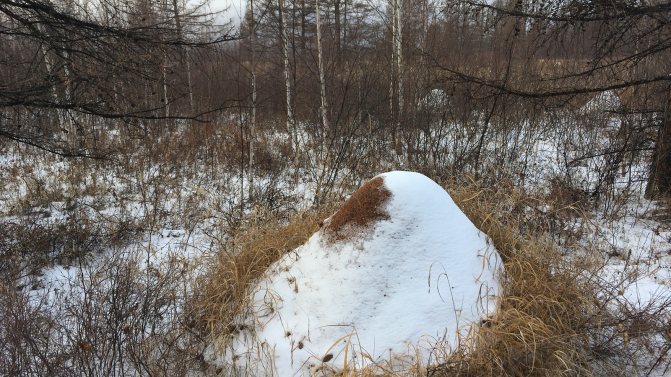

If the winter is warm, the ants continue to stay awake in the lower levels of their dwelling.
The ants that live in human homes do not even prepare for winter: there is always food, the temperature is normal.
Ant family lifestyle and home arrangement
Ants are social insects. They live in a large family, in which everyone has their own responsibilities. He receives them before birth, since eggs and larvae of workers and the court retinue are laid and raised in different ways. The nutrition of the ants also depends on the future destination.
The uniqueness of a family with several thousand of its members lies in the fact that there are 3 sexes in the nest: he, she, it.
There are 3 sexes in the ant's nest: he, she, it
The queen never leaves her nest, lays eggs. In some families, there may be several of them. They live longer than anyone else, if they do not die from the clutches of their relatives. The name of the queen is not correct, since she is not in charge of anyone. On the contrary, its fate depends on the decision of the worker ants. To fertilize the queen, there are several males also living in the burrow with the queen. The bulk - hard workers, warriors and people, feeding everyone and deciding everything, asexual insects, the very ones.
The reproductive organs of worker ants have evolved into a sting, with which they defend themselves from enemies and kill small prey.
What ants eat and what it depends on. Insects consume protein food - giving strength and rapid growth, and easily digestible carbohydrate foods:
- carbohydrate adults;
- protein queen and larvae.
Ants eat protein food - giving strength and rapid growth, and easily digestible carbohydrate foods
Worker ants live 1 - 3 years. Males under the queen die a few days after mating. When the queen begins to perform her duties poorly, the hard workers lay a series of female larvae and kill the only woman in the family, and then the inhabitants of the nest eat her.
Asexual individuals make up the bulk of the anthill. They get food and drag it to the nest to feed future ants. They keep and feed the queen and her retinue for reproduction.
No, they won't creep
The well-known garden ants in formicaria are practically not found.
- Some people argue, they say, I'll buy a house, but I'll save money on ants - I'll catch it in the garden. But it is unlikely that something will come of this venture: firstly, the colony must necessarily be with a queen, and very few people will be able to recognize and get it. And secondly, they are difficult to care for and require three months of wintering in a cold, dark place. In this regard, reapers are less whimsical.
One of the biggest fears of new farmers is: will pets creep around the apartment?
- You shouldn't worry about this. It is possible to colonize ants without fear even in an open formicarium without a top cover, after having lubricated the edges with Antipobeg oil. But even if you simulate the situation that you have turned the anthill on the carpet, you do not need to immediately reach for the vacuum cleaner: most likely, the insects will return to the house on their own. And if someone does not find the way, then the ant, accustomed to humidity of 60–80 percent, simply will not survive in the apartment climate.
What else are ants afraid of besides too dry air?
- Strangely enough, stress. Therefore, try not to shake the formicaria and do not take it in your hands again. Another major stress factor is direct sunlight. Therefore, the windowsill is not the best place for a farm.
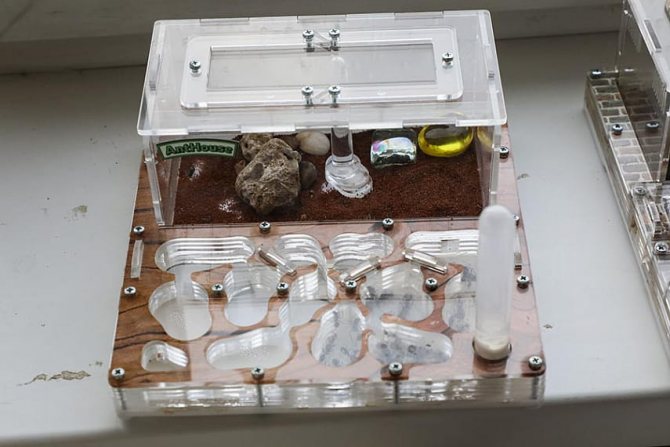

Pharaoh ant
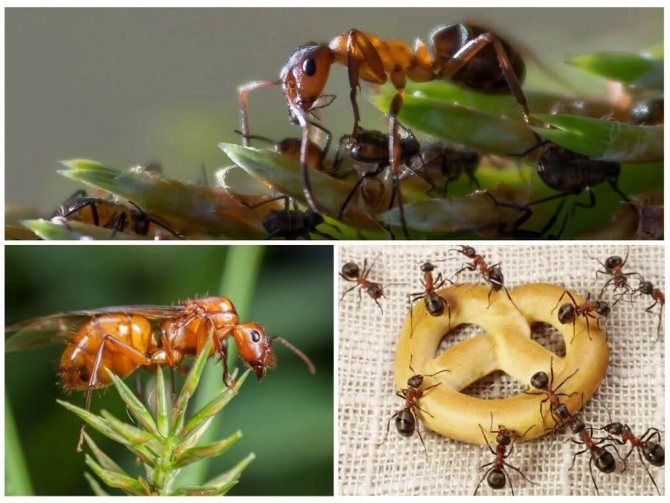

Food for the ant
A species that for two centuries has completely mastered next to a person. The food of the pharaoh ants does not differ from the human menu. Under natural conditions, indoor pests feed on what their red brethren eat in the forest:
- plants' seeds;
- small invertebrates;
- insects and larvae.
But in the house, these parasites become a real disaster.Their diet is expanding significantly. Foods that ants eat at home:
- bread;
- sugar;
- potatoes;
- cereals;
- butter;
- cheese;
- meat;
- sausage;
- sweets.
It is much easier to name what they do not eat than to list everything edible for these insects. As food they are especially attracted to sweets. They are quite capable of eating only candy, cookies, pastries and cakes.
At home, almost everyone becomes omnivorous and eats the same food as humans.
Species and feeding of larvae
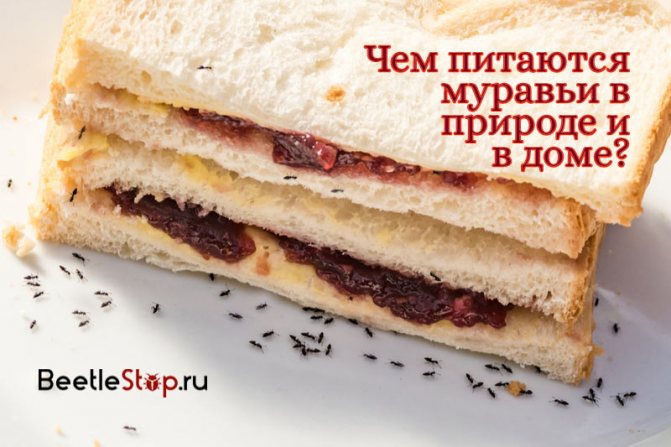

When their eggs hatch, the larvae are taken care of by the worker ants. Some of the larvae can eat on their own and they are simply supplied with protein food in the form of bodies of killed insects, larvae, caterpillars. The rest have no mouth or even outlet for waste products. However, they grow and develop. The workers process the food and inject the easily digestible composition into the larvae.
We suggest that you familiarize yourself with: How to get ants out of an apartment
During the growth period, the larva changes its cover 4 times. It is soft, without chitin. Everything discarded is stored in the storerooms until winter.
The larva changes its cover 4 times during the growth period
There is a lot of food in the summer. During this period, the female lays eggs in the reserve. Some of the larvae do not develop, remain in this state constantly and do not turn into adults and adults. They become the family's food reserves.
In winter, only in the northern regions do ants hibernate. The rest close the entrance tightly and continue their activities. During this period, reproduction does not occur. When the stock in the pantries decreases, they eat undeveloped larvae and the remaining eggs, discarded larva covers.
Feeding intensity
Once a day or once a week: how often to feed the ants and how much food should be given - this question is no less important than what to feed the colony. You need to feed the colony regularly, but in small portions.
, especially when it comes to a small anthill for 30-100 insects.
If the ant gets a little hungry, that's okay. But if the food goes bad, he will poison the colony - then trouble will happen. Therefore, the portions must be calculated so that they are eaten in a few hours. Only practice will help here.
Note:
if new individuals of ants become smaller in size, then the colony does not have enough food, it is necessary to increase the food supply and diversify the diet. By doing this on time, the keeper gets rid of problems with the colony in the future.
Insects usually throw out excess food. Not eaten is a sure sign that you should put less in size or quantity next time, but it is better to take a break from feeding.
Industrial insect repellent
Stores offer a lot of chemicals that help remove ants: gels, sprays, pencils, glue traps, powders and the like, most of them are poisonous to humans and warm-blooded animals, do not treat in the presence of children and pets. Read the instructions carefully and follow the rules reported by the manufacturer. Wear rubber gloves and a respirator if necessary.
- Glue, electrical and poisonous traps are not large boxes inside of which there is a sticky surface, ants stick to it and die. Or a poisonous bait that insects drag to their nest where they infect others. An electric trap with a fragrant bait kills with an electric shock. Traps: "Tunnel", "Clean House", "Trap", "Combat", "Blockbuster", etc.
- Aerosols: "Dichlorvos", "Raptor", "Get con," Combat "Sprayed in places where insects accumulate and directly into the nest. Effective but very toxic!
- Insecticidal ant gels: applied in a dotted line in places inaccessible to children and animals, manufacturers add substances that attract ants, they carry droplets of the substance to feed the uterus and offspring.The poison works delayed, so the entire colony dies. Gels: Globol, Raptor, Storm, Brownie, Fas.
- Pencils and powders are less effective than gels and aerosols, but they can also help: Mashenka, Delicia, Adamant-gel, Fenaxin.
- Others.
The size of these insects depends on the species and varies from 1 mm to several centimeters. Their body consists of 3 parts: head, chest and abdomen (in workers it has a sting). 3 pairs of legs equipped with claws are attached to the chest. The body may be covered with hairs. The head has 2 antennae and developed jaws.
These creatures lack lungs. Oxygen and other gases involved in metabolism enter through microvalves in the exoskeleton, spreading through the trachea throughout the body. Ants do not have lacunar blood vessels. They are replaced by a long, thin, perforated tube that runs along the upper body and serves as the heart. These social insects form 3 castes: winged females and males and wingless workers.
What to do to keep ants from getting started
The best remedy for domestic ants is hygiene, timely cleaning, minor repairs (insects often live in floor crevices, adobe walls, cracks). Do not leave food and bread crumbs on the table. It is best to take out the kitchen bucket regularly to deprive the insects of their food base. Fix all the taps, wipe dry the sink, bathtub, do not leave water in flower trays, ants do not settle where there is no access to water. Place mosquito nets on the windows so that during the massive flight of insects, winged individuals do not get into the apartment and do not build a nest in your house.

